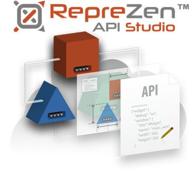API Design
The Art of Future-Proofing: Evolutionary API Design for Unstoppable Applications
When it comes to building robust and resilient applications, API design plays a pivotal role. With the ever-evolving landscape of technology, it is crucial to adopt an evolutionary approach to API design that ensures applications remain adaptable and future-proof. By following best practices for RESTful API design, leveraging API design patterns for scalability, incorporating API design principles for microservices architecture, implementing secure API design guidelines and techniques, and optimizing API design for mobile app development, developers can create APIs that stand the test of time and empower their applications to thrive in the face of constant change.
less
Best Practices for RESTful API Design: Setting the Foundation
RESTful APIs have become the de facto standard for web services due to their simplicity and scalability. Implementing best practices for RESTful API design sets a solid foundation for evolutionary growth. This involves adhering to the principles of resource-oriented architecture, designing intuitive and consistent endpoint URLs, leveraging appropriate HTTP verbs for CRUD operations, and implementing meaningful error handling and status codes. By following these guidelines, developers ensure that their APIs are easy to understand, maintain, and extend, making them more future-proof.
API Design Patterns: Scaling Up for Success
In the quest for scalable applications, API design patterns provide invaluable solutions. These patterns offer proven strategies to address common challenges faced in large-scale systems. From the layered architecture pattern to the gateway pattern, developers can leverage these design patterns to achieve better separation of concerns, improve performance, enable fault tolerance, and facilitate easier integration with third-party services. By incorporating these patterns into their API design, developers can lay the groundwork for scalable applications that can gracefully handle increased loads and evolving business needs.
Principles of API Design for Microservices Architecture: Embracing Modularity
In the era of microservices, adopting the right principles of API design is essential for building modular and agile applications. Microservices architecture advocates for small, independent services that can be developed, deployed, and scaled individually. To achieve this, API design principles such as loose coupling, single responsibility, and composability come into play. By designing APIs with these principles in mind, developers enable microservices to evolve independently, allowing for easier maintenance, versioning, and scalability, which are vital aspects of future-proofing applications.
Secure API Design: Protecting Applications from Threats
In an interconnected world, security is a top concern for any API-driven application. Secure API design goes beyond just implementing authentication and authorization mechanisms. It involves following secure coding practices, enforcing encryption and data privacy measures, validating and sanitizing input, and implementing appropriate access controls. By adhering to secure API design guidelines and techniques, developers can safeguard their applications against vulnerabilities, breaches, and unauthorized access, ensuring the long-term integrity and trustworthiness of the system.
API Design for Mobile App Development: Bridging the Gap
The explosive growth of mobile app development necessitates API design that caters specifically to the unique requirements of mobile platforms. Optimizing APIs for mobile app development involves considerations such as minimizing network usage, providing efficient data synchronization mechanisms, supporting offline capabilities, and delivering responsive and intuitive user experiences. By crafting APIs tailored to the needs of mobile apps, developers empower their applications to leverage the full potential of the mobile ecosystem, while remaining adaptable to future advancements.
Embracing Evolution: Future-Proofing through API Design
Evolutionary API design is the art of building applications that can seamlessly adapt and thrive in a rapidly changing technological landscape. By combining the best practices for RESTful API design, leveraging API design patterns for scalability, incorporating API design principles for microservices architecture, implementing secure API design guidelines and techniques, and optimizing API design for mobile app development, developers can future-proof their applications, ensuring they remain relevant and valuable over time. Embracing this approach is key to building robust, flexible, and unstoppable applications that can stand the test of time.

3 Review
Apitive Studio is a powerful platform for digital product managers and API consultants to practice agile API product development.


3 Review
PrestoAPI is one of the only no code, cloud based, tools to generate REST API’s. It lets developers instantly generate RESTful APIs from any data source, eliminating back-end development of modern mobile, web, and IoT applications.


3 Review
RESTful API Modeling Language (RAML) makes it easy to manage the whole API lifecycle from design to sharing.


3 Review
The Synatic data platform is a combination solution of iPaaS, ESB, ETL and API Management, created to provide a holistic solution that delivers value with incredible speed. With simple to use tools coupled with enterprise-grade features, we cut data integration, automation and analytics time and cost by up to 80%, all at a reasonable price. Our cloud…
Read more about this company

3 Review
The Fastest No Code Backend Development Platform. Xano gives you a scalable backend, a flexible database, a ready-to-use API and a No Code business logic builder to transform data to and from any source.


3 Review
WSO2 API Manager is a complete solution for designing and publishing APIs, creating and managing a developer community, and for scalably routing API traffic. It leverages proven, production-ready integration, security, and governance components from the WSO2 Enterprise Service Bus, WSO2 Identity Server, and WSO2 Governance Registry. In addition, it…
Read more about this company

3 Review
RepreZen API Studio is a powerful API design workbench, with breakthrough capabilities to help you design, document and deliver world-class APIs and microservices in a fraction of the time. Key capabilities: * Model your APIs with industry-standard Swagger-OpenAPI 2.0, 3.0 or with RAPID-ML, an innovative, domain-driven API modeling language. * Rich…
Read more about this company


3 Review
Coding APIs before designing them leads to wasted time, effort, and money. With a design-first approach, successful API programs can be built at scale, and the world’s best APIs can be built in minutes. Let Stoplight be your platform to drive better, faster, more effective design-first API development.


2 Review
Mockoon is the easiest and quickest way to run mock API locally. No remote deployment, no account required, open source.


2 Review
SwaggerHub is an API design and documentation platform built for teams to drive consistency and discipline across their API development workflow.
- API design refers to the process of creating and defining the interface and functionality of an Application Programming Interface (API). It involves designing the endpoints, data structures, request/response formats, and overall architecture of the API to ensure effective communication between different software components.
- API design is crucial because it determines how different software systems or components can interact and communicate with each other. A well-designed API promotes reusability, extensibility, and ease of integration, allowing developers to build applications faster and more efficiently. It also improves maintainability, scalability, and the overall user experience of the software.
- The key principles of API design include simplicity, consistency, modularity, flexibility, and documentation. APIs should be easy to understand, have consistent naming conventions and behaviors, be modular to support independent evolution, provide flexibility for different use cases, and have comprehensive documentation to guide developers on how to use them effectively.
- Some best practices for API design include following RESTful principles, using meaningful and consistent naming conventions, employing versioning strategies, providing clear and informative error handling, implementing proper authentication and authorization mechanisms, optimizing for performance, and considering the needs of the target audience and developers who will consume the API.

